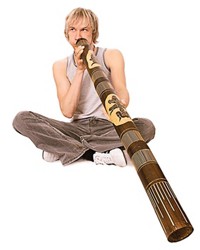Advertisement
Grab your lab coat. Let's get started
Welcome!
Welcome!
Create an account below to get 6 C&EN articles per month, receive newsletters and more - all free.
It seems this is your first time logging in online. Please enter the following information to continue.
As an ACS member you automatically get access to this site. All we need is few more details to create your reading experience.
Not you? Sign in with a different account.
Not you? Sign in with a different account.
ERROR 1
ERROR 1
ERROR 2
ERROR 2
ERROR 2
ERROR 2
ERROR 2
Password and Confirm password must match.
If you have an ACS member number, please enter it here so we can link this account to your membership. (optional)
ERROR 2
ACS values your privacy. By submitting your information, you are gaining access to C&EN and subscribing to our weekly newsletter. We use the information you provide to make your reading experience better, and we will never sell your data to third party members.
Education
Newscripts
Trading scientists, Really innovative reality TV, Brains on display
by Linda Wang
March 20, 2006
| A version of this story appeared in
Volume 84, Issue 12
Trading scientists
Ronald A. Depinho, of Dana-Farber Cancer Institute, in Boston, probably never imagined that his mug would one day appear on a trading card.
It's now a reality for him and 49 other prominent scientists in the field of aging research, thanks to online publisher SAGE Crossroads, which hopes the gimmick will spur public interest.
"Shuffle the deck, meet the experts, and explore the cutting edge of research on the biology of aging," the box says. The front of each trading card bears a researcher's picture and affiliation. The back gives their scientific stats and some fun facts.
For example, we learn that Ashley I. Bush, an Alzheimer's disease expert at Massachusetts General Hospital, in Boston, is perhaps the only scientist who has written television comedies. We also discover that Caleb (Tuck) Finch, who studies the neuroendocrinology of aging at the University of Southern California, is a veteran bluegrass fiddler.
In a SAGE online poll, Aubrey de Grey of the department of genetics at the University of Cambridge won for the most popular card. His key contribution is the creation of the Methuselah Mouse competition, a race to extend the lifespan of the lab mouse.
Not familiar with a particular scientific term? Two wildcards define key terms such as chelator, "a compound that grabs free-floating metals in test tubes, cells, or tissues," and microarray, "a device used to measure the activity of thousands of genes simultaneously."
A pack of trading cards can be purchased at www.sagecrossroads.net for $12.95.
Really innovative reality TV
The search for America's best new invention is on. A new reality TV show called "American Inventor" pits thousands of struggling inventors against each other as they compete for a special spot in America's homes.
A panel of judges will narrow down the contestants to a group of finalists, who will each be given $50,000 to develop their product, refine it, and take it to the next level. Viewers will then choose the winning invention, and that inventor will receive $1 million.
Sound vaguely familiar? That's because the show is produced by Simon Cowell and the producers of "American Idol."
In the March issue of Wired magazine, reporter James Lee provides a sneak peek at some of the inventions in contention: a bra designed specifically for women with breast implants, created by 28-year-old Jamie O'Neal; a waste receptacle that recycles the water from urine, the brainchild of 31-year-old Michael Shin; and sandwiches made with potato chips instead of bread, from Peter Russo, a 53-year-old former postal worker.
The two-hour series premiere of "American Inventor" aired on Thursday, March 16. The show will air every Thursday at 9 PM EST.
Brains on display
A mind is a terrible thing to waste. The Museum of the Brain, in Lima, Peru, seems to think so and has collected more than 2,800 brain parts, which are now on display for public viewing.
Visitors can examine brains of people felled by afflictions ranging from trichinosis (a brain disease caused by eating undercooked meat, especially pork) to stroke, according to an article on March 8 in Mail & Guardian, Africa's first online newspaper.
Other brains have been damaged by Alzheimer's, heart attacks, blood clots, hemorrhages, and myriad tumors. Also on exhibit is the brain of a person who died from Creutzfeldt-Jakob disease, the human variant of mad cow.
The brains, collected since 1942, are crammed onto shelves from the floor to the ceiling. The exhibit also includes animal brains, which are cream-colored instead of the characteristic gray of human brains.
The museum is sponsored by the National Institute of Neurological Sciences and is inside the Santo Toribio de Mogrovejo hospital, a single-floor clinic in Lima built in the early 20th century and modeled after a 19th-century French hospital.






Join the conversation
Contact the reporter
Submit a Letter to the Editor for publication
Engage with us on Twitter